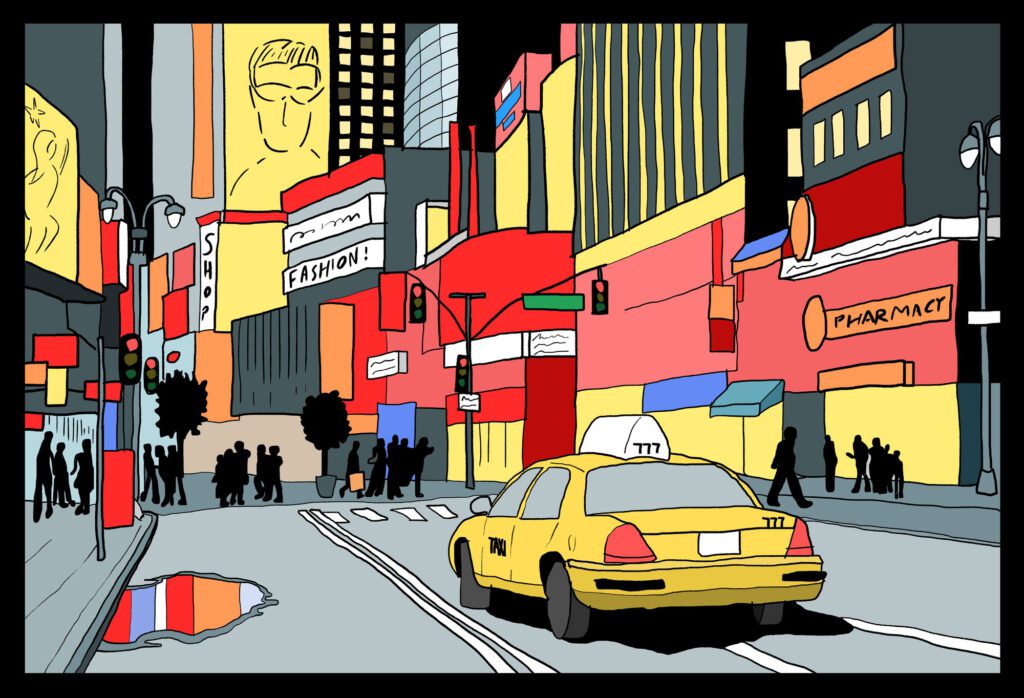Given the sheer variety of digital out-of-home (DOOH) inventory up for grabs, building programmatic pipelines for the DOOH market is a daunting task.
More standardization is needed for DOOH programmatic to enter the next phase of growth. With inventory spanning giant video walls in downtown districts to smaller-format screens on top of taxi cabs, real-time bidding (RTB) needed a spec that could communicate those nuances.
With that need in mind, the IAB Tech Lab has updated its OpenRTB standard to include objects specifically designed for DOOH. It also published new DOOH-specific guidelines and technical resources for real-time bidding in collaboration with the Out of Home Advertising Association of America (OAAA) and Outsmart, the Out of Home Advertising Association for the UK.
“We need to turn from fragmentation and toward uniformity,” said Jeff Jan, head of industry initiatives for the OAAA, calling these standards a “major milestone toward getting to that level of uniformity and standardization.”
Even without the new spec, programmatic has already quadrupled as a share of DOOH spend, as the pandemic transformed the DOOH market.
US advertisers spent a little over $400 million on programmatic out-of-home in 2022, according to eMarketer. That’s double the amount spent in 2021, and that figure is expected to grow to $800 million by 2024. Programmatic accounted for about 16% of DOOH in 2022, and that share is projected to grow to 25% by 2024.
A common language
Without OpenRTB standardization for DOOH, programmatic auctions have run with higher costs and added complexity, stifling growth in this emerging channel.
“Every DOOH SSP had to create a custom implementation to a DSP and vice versa if they wanted to trade together,” said Tim Harvey, founder of UK-based tech vendor Knitting Media and a participant in the IAB Tech Lab’s DOOH working group.
Navigating so many proprietary implementations added even more complexity to a market that was struggling with non-standardized ways of describing screens and impression multipliers, and all of that customization added to integration costs, Harvey said.
To reduce the need for custom DOOH implementations, the updated Tech Lab guidelines describe new OpenRTB extensions to standardize programmatic buying of DOOH inventory, along with a standardized schema for DOOH bid requests.
In DOOH, impression count is variable. One ad can generate multiple impressions from passersby. Contrast that with OpenRTB trading for online display, where the assumption is that one targeted user equals one impression.
The solution was to add an impression multiplier. Now, the OpenRTB DOOH spec includes a standardized way to implement that impression multiplier into the “imp” object, which calculates the number of impressions up for grabs.
Outdoor display devices also vary widely in size and location type. So, the Tech Lab’s new guidance details how to use standard OpenRTB bid request objects to account for display size. The “device.ppi” object conveys a screen’s dimensions in pixels per inch, width and height.
Likewise, because DOOH devices are often connected to walled garden IP networks (vs. the open internet, where users tap through content), this setup means DSPs can’t use their typical IP address geolocation techniques to determine where ads are being delivered. So, the new guidelines require DOOH transactions to include the geolocation lat/long field.
And because DOOH displays are often connected to cellular networks, there can be a delay between a bid request being won and an ad actually appearing on the display. So, the guidelines offer suggestions for building in lead time tolerance from when the bid request is won to when the ad is served. In addition, an auction event notification URL is fired when a bid has won an auction, and a separate auction event billing URL is fired when the creative actually renders on the screen.
The IAB Tech Lab’s new standards and guidance are meant to provide the DOOH supply chain with a common language for describing all of these complexities and offer a standardized way for SSPs and DSPs to convey these complexities through OpenRTB bid requests.
“The golden rule is, he who has the gold makes the rules,” said Jason Shao, CTO at Place Exchange and a participant in the DOOH working group. “To make it easy for buyers to buy, they need to be able to compare what they’re getting across multiple sources, and they need to be able to mix and match different supply paths or different environments. Having a common language enables that [flexibility] down to the nitty-gritty details of implementation.”
















